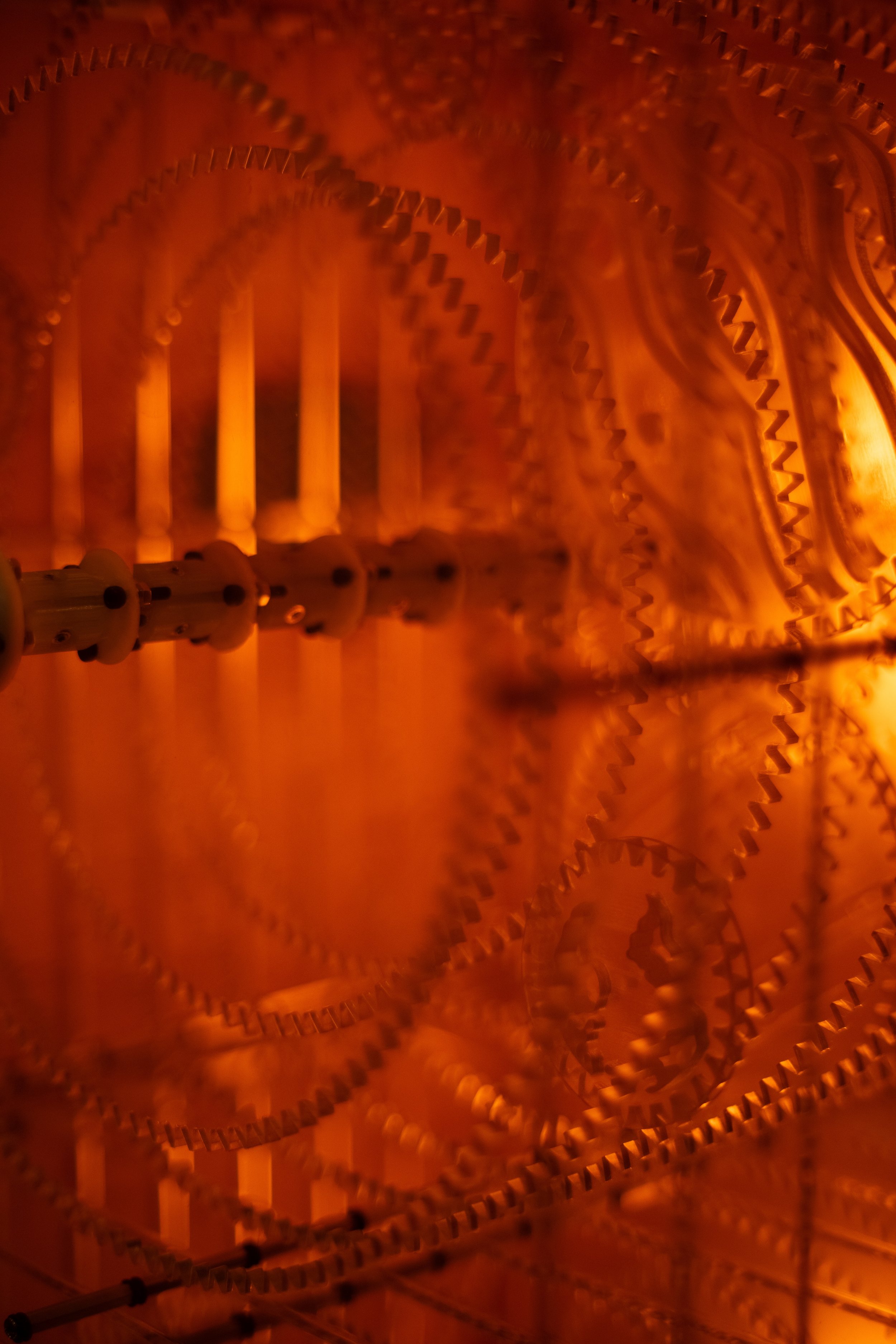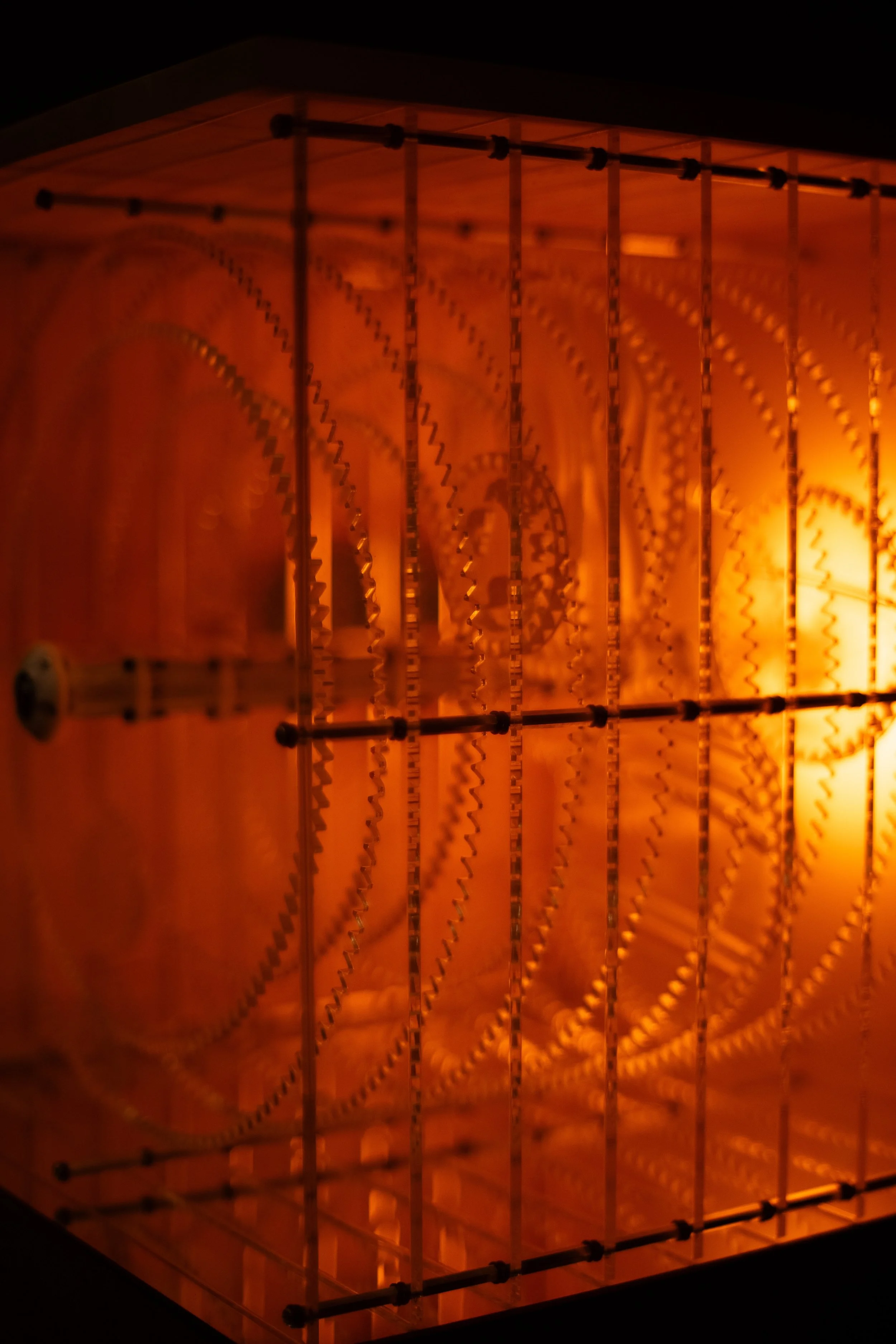#Installation #Kinetic #Mechatronics #3DPrinting #Meditative
An installation, inspired by the planetary gearset, attempting to render the conceptual pace of celestial bodies in the solar system through the eight layers of 3D-printed/laser-cut transparent gearsets and the warm glow of LED backlight. The transparent structure is housed in a handcrafted maple frame and based on 400-pound concrete. The choice of three materials, namely plastic-wood-concrete, is intended to form an evolution that synthesizes the artificial and the natural to be the totality we call the universe.
“Gravity constitutes matter such that matter is objective gravity. It is one and the same matter dividing itself into poles and thereby creating a line of cohesion, generating diverse shapes in a series of evolutions with different relations between the factors. This is gravity’s real difference, from which we distinguish the other, ideal difference, that of the potentials of time and space.”
—— G.W.F. Hegel, De Orbitis Planetarum

















Group project finished in Spring 2023, exhibited at ITP/IMA Spring Show 2023.
Yuxiang Cheng: Mechatronics, Modeling, 3D Printing, Assembly, Woodworking, Documentation
Long L: Concept, Astrophysics, Modeling, Assembly, Concrete
Steve Sun helped with fabrication.
Process
The starting point of the project was to design the planetary gearsets since it’s the dimensional reference required for anything designed around it.
With the initial concept of building layers of planetary gears in mind, we purchased panels of 1/4” acrylic that would be cut to be frames and sun gears.
I started the making process with the electronics as it’s easy and intuitive in this project.
After comparison, I picked the 12v amber LED and aligned them in a way that can be diffused to be round.
For the motor, we picked one that’s 12v, to match the voltage, and 2rpm, for highest possible torque.
I then did something that I do every day, measure and design a mount from this to that. Here, “this” is the motor axle, and “that” is the main shaft. The mount also fits a bearing, which is necessary for anything rotary. It was iterated twice.
With all these, we mapped the screw holes to the drawings and laser-cut two back panels, then, did the initial assembly.
The next important step of the process was to design every single part and also the totality of the mechanical system.
What I worked extensively on to design and iterate is the manufacturing of the gears and structure on the shaft.
For the shaft, which is the core of the kinetics, I first drew a diagram for assembly (with the first iteration of the flange).
I then custom-designed and printed several iterations of flange for the sun gear.
I iterated it a few times: from the plug-and-fit with soft washer solution to a simpler screw-mount solution. I also used the length of the flange to eliminate the gap between sun gears. The sole purpose is to make the assembly precise and optimize overall mechanical performance.
After testing a few times, we decided to go with transparent planet gears, while FDM printing generally cannot print transparently and my PVA printing trick could not reach a good level of transparency, we chose to print resin, more specifically, print with the Polyjet, which is the larger format option available to us.
The first assembly, or, as we call it, the final prototype was finished and documented when we were waiting for the Polyjet prints and testing materials.
Enclosure, as the last part, took probably way too much time and crafting, but it indeed brought back my passion for woodworking.
































